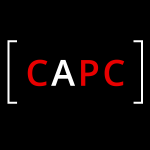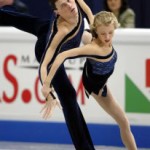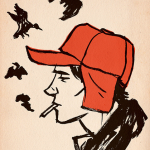The most recent issue of Christianity Today includes a delightful little appreciation by Christopher Benson for George Herbert’s classic poem “Easter Wings.” As Benson notes, Herbert was a seventeenth-century priest in the Church of England who wrote poems throughout his life, though they did not see publication until his friend (religious reformer Nicholas Ferrar) saw to the posthumous release of the works in a 1633 volume entitled The Temple. “Easter Wings” is an example of a pattern poem, a poem whose visual shape takes the form of a picture that complements the poem’s message. In crafting such a work in which form and meaning are so intricately bound, Herbert proved to be a poetic innovator; “Easter Wings” may be the single most famous pattern poem in the English language, and as such it is widely reprinted in anthologies, religious and otherwise.
Herbert’s “Easter Wings” serves as a reminder that for centuries, Christian artists were not merely responding to cultural trends but were creating them. Herbert’s The Temple was one of the landmark publications that helped ignite a group of poets that literary scholars now call the Metaphysical Poets. These writers include the famous John Donne (also an Anglican minister) and other poets like Henry Vaughan and Richard Crashaw, both of whom were explicitly influenced by The Temple. And the season of Easter, marking as it does the climax of the Christian faith on the liturgical calendar, has inspired many of the best poems by Christians and non-Christians alike.
This Lenten year, my wife and I led our kids in memorizing another excellent Christian Easter poem, Christina Rossetti’s “Easter Carol.” Rossetti (1830-1894) was the youngest of four brilliant children: her sister Maria was a Dante scholar, and her brothers Dante Gabriel and William Michael helped spearhead the Victorian literary and artistic movement known as Pre-Raphaelitism. Though she was never formally a member of the influential Pre-Raphaelite Brotherhood, Christian Rossetti published anonymously some poems in their little periodical, The Germ, and remained close with her brothers throughout her life. Yet she never followed them toward religious skepticism, holding on to a fervent form of High-Church Anglican theology. Because of interest in the traditional seasons of the liturgical year, she penned some of the best poems for holy days in the English language, including “Easter Carol”:
Spring bursts to-day,
For Christ is risen and all the earth’s at play.
Flash forth, thou Sun,
The rain is over and gone, its work is done.
Winter is past,
Sweet Spring is come at last, is come at last.
Bud, Fig and Vine,
Bud, Olive, fat with fruit and oil and wine.
Break forth this morn
In roses, thou but yesterday a Thorn.
Uplift thy head,
O pure white Lily through the Winter dead.
Beside your dams
Leap and rejoice, you merry-making Lambs.
All Herds and Flocks
Rejoice, all Beasts of thickets and of rocks.
Sing, Creatures, sing,
Angels and Men and Birds and everything.
All notes of Doves
Fill all our world: this is the time of loves.
While not as visually innovative as Herbert’s “Easter Wings,” Rossetti’s poem brilliantly plays on Easter’s associations with early spring: just as the holy day marks Christ’s resurrection, nature too begins its rebirth out of winter. Almost all of the poem’s imagery could simply represent the natural world as it emerges in March and April. Yet each image carries with it either a clear Christian allusion or at least a suggestion of resurrection. The final evocation—“All notes of Doves / Fill all our world”—plays on the associations of the Dove with the Holy Spirit, the means by which Christ is now experienced by his church. The entire poem “bursts” with the exuberant joy that ought to accompany the Easter season after winter and Lent have completed their courses.
By the time Easter arrived this year, my family had come pretty close to getting the whole poem down (with, as usual, my five-year-old daughter leading the pack). Memorizing “An Easter Carol” this year was not only a delightful personal excursion for me; it reminded me that Christians can be trailblazers when it comes to generating art, literature, and culture. George Herbert help spur on a whole movement; Christina Rossetti spoke Christian truth beautifully and profoundly among her more skeptical family and friends. They are just two of many innovative Christian poets, and we may pray that the resurrection of Jesus continues to inspire more great art in the generations to come.









